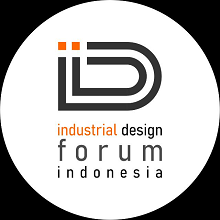MEMAHAMI PERAN KUALITAS VISUAL DALAM MENINGKATKAN PENGALAMAN PENGGUNA VR PADA PRESENTASI DESAIN INTERIOR
Abstract
With the development of digital technology, Virtual Reality (VR) has become an innovative tool in interior design presentation and exploration. VR allows users to interact with the space immersively, providing a more realistic experience compared to two-dimensional representations. One of the main factors that affects the quality of the user experience in VR is visual resolution. Higher resolution can increase the level of realism, clarifying material details, lighting, and textures, and reducing distracting visual effects, such as pixelation or blur. In the context of interior design, an optimal visual experience is essential to help designers and clients understand the scale, composition, and atmosphere of a space before the realization stage. Therefore, this study aims to explore the extent to which visual resolution in VR can affect user perception and interaction, and how optimizing display quality can improve the effectiveness of VR as an interior design presentation tool. The research method includes data collection through questionnaires, observations, and experiments on interior design users. The results of the study show that the use of high resolution directly increases respondents' interest and the effectiveness of using VR as a visualization tool in interior design. This shows the great potential of VR technology in enhancing the virtual interaction experience, as well as providing important directions in the selection of visualization media in the future. With high resolution, VR is able to provide a more realistic and immersive visual experience for users, which in turn can improve the understanding and appreciation of interior design. These findings provide a foundation for further development in the application of VR technology in the design industry, as well as emphasizing the importance of considering the visual resolution factor in its use. Thus, this study not only provides new insights, but also offers practical contributions to the development of VR in the context of interior design.
Keywords
Full Text:
PDF (Bahasa Indonesia)References
Aungst, S., Barton, R., & Wilson, D. (2003). The virtual integrated design method. Quality Engineering, 15(4), 565-579.
Guevara, D., de Laski-Smith, D., & Ashur, S. (2022). Interior Design Students’ Perception Of Virtual Reality. SN Social Sciences, 2.
Guo, L. (2023). Simulation evaluation of virtual reality in interior design effect display and practice mode innovation. Soft Computing, 27, 8371-8380.
Joy, E., R, A., & Raja, C. (2022). Digital 3D modeling for preconstruction real-time visualization of home interior design through virtual reality. Construction Innovation, Vol. 24(2), 643 - 653.
Kaleja, P., & Kozlovská, M. (2017). Virtual Reality as Innovative Approach to the Interior Designing. Selected Scientific Papers - Journal of Civil Engineering, 12(1), 109 - 116.
M., V. (2024). How Virtual Reality is Changing the World of Interior Design. San Antonio: Vevtion Technologies.
Mudliyar, P., Ingale, Y., Bhalerao, S., & Jagtap, O. (2014). Virtual Reality for Interior Design. International Journal of Research in Advent Technology, 2(3), 260-263.
Özgen, D. S., Afacan, Y., & Sürer, E. (2021). Usability of virtual reality for basic design education: a comparative study with paper-based design. International Journal of Technology and Design Education, 31(2), 357-377.
Pramalystianto, A. (2023). Study of Image Resolution in Virtual Reality Panorama Technology 360 In Comfort of Interior Visualization. International Journal of Architecture and Urbanism, 7(2), 244-250.
Society Interiors Design (2024). Virtual Reality (VR) in Interior Design: How VR is Revolutionizing Design Processes. Indiana: Society Interiors & Design Magnate Publishing Pvt Ltd.
Wasilewski, S., Grobe, L. O., Wienold, J., & Andersen, M. (2022). Efficient Simulation for Visual Comfort Evaluations. Energy and Buildings, 267.
Xu, J., Li, M., Cao, K., Zhou, F., Lv, B., Lu, Z., Cui, Z., & Zhang, K. (2022). A VR Experimental Study on the Influence of Chinese Hotel Interior Color Design on Customers’ Emotional Experience. Buildings, 12(7).
DOI: http://dx.doi.org/10.22441/narada.2024.v11.i1.010
Refbacks
- There are currently no refbacks.
Fakultas Desain dan Seni Kreatif
Universitas Mercu Buana
Gedung E Lantai 4
Jl. Raya Meruya Selatan no.1, Kembangan, Jakarta 11650
Tlp./Fax: +62215871335
Journal International Standard Serial Number (ISSN) Registration:
The Journal is indexed by:
Tools for Citations & Plagiarism Detection:

Ciptaan disebarluaskan di bawah Lisensi Creative Commons Atribusi-NonKomersial 4.0 Internasional
 NARADA: Jurnal Desain dan Seni
NARADA: Jurnal Desain dan Seni

























